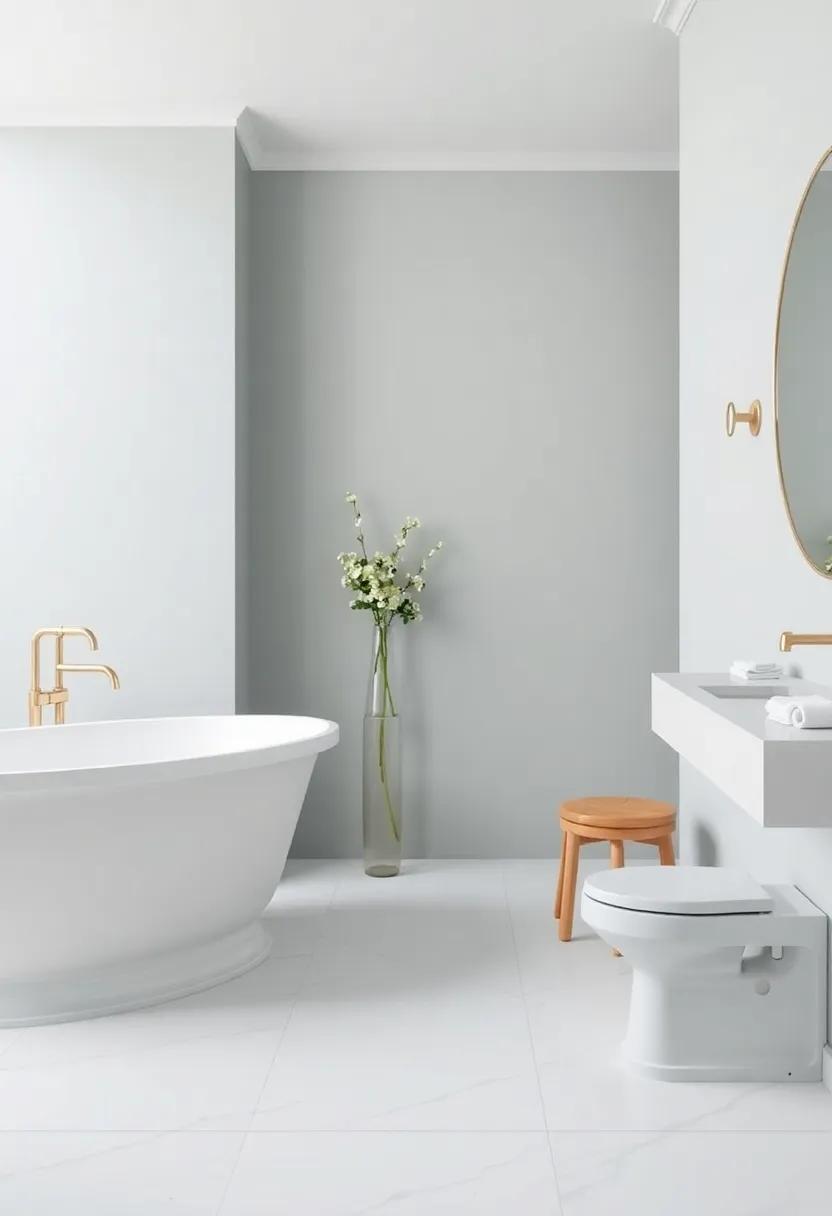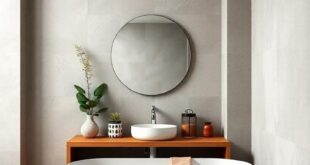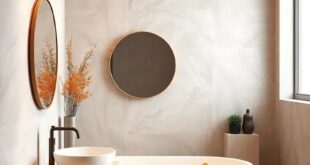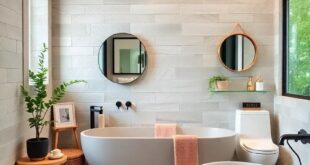In a world where trends ebb and flow with the seasons, ther exists a sanctuary of style that refuses too be swayed by the whims of fashion: the classic bathroom. timeless elegance finds its expression in these serene spaces, where customary design elements meld seamlessly with functionality, creating an atmosphere of understated sophistication. As we explore the enduring allure of classic bathroom design, we invite you to journey through the nuances of form and function that define this enduring aesthetic. From the delicate curves of clawfoot tubs to the intricate details of vintage fixtures, the classic bathroom embodies a commitment to quality and craftsmanship that transcends generations. Join us as we delve into the features that make this design style both a refuge from contemporary chaos and a celebration of beauty that stands the test of time.
Timeless Fixtures That Define Classic Bathroom Aesthetics
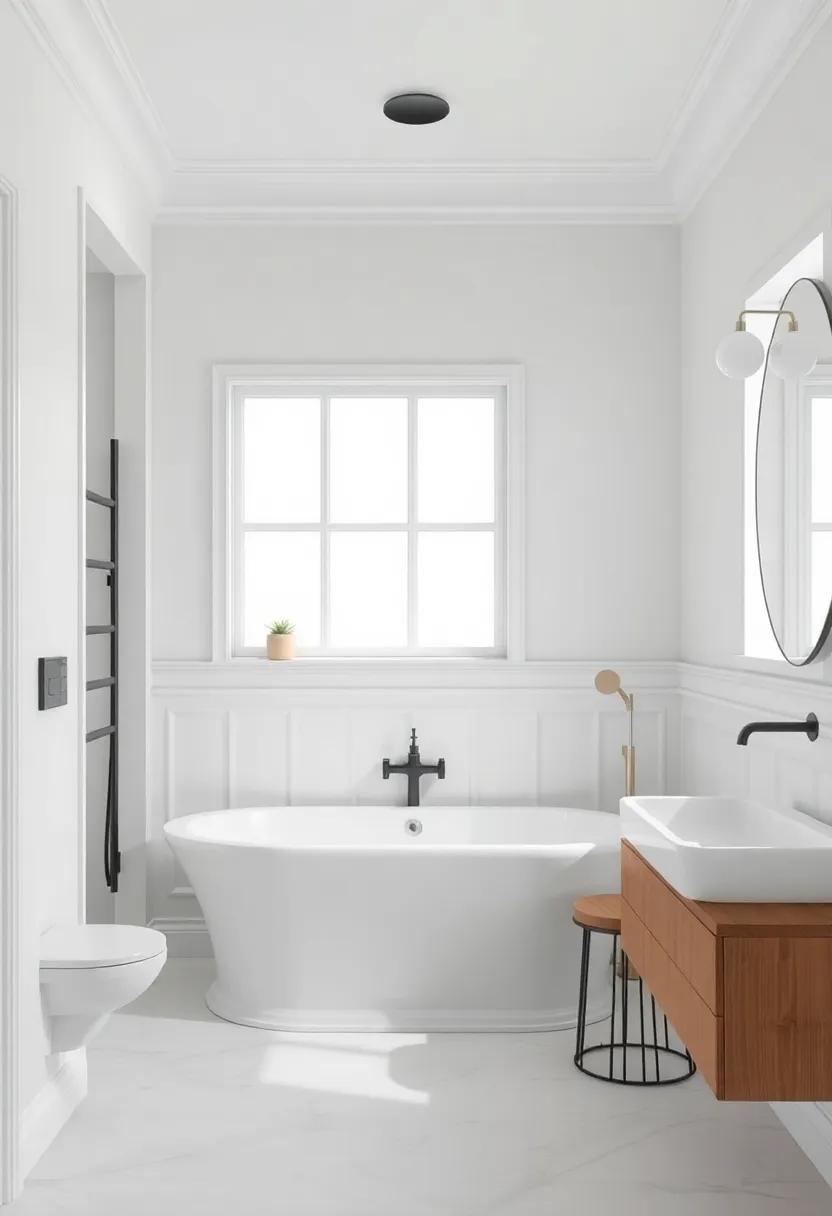
In the realm of classic bathroom design, certain fixtures stand out for their ability to evoke a sense of nostalgia while providing timeless elegance. Clawfoot tubs,with their elegant legs and pristine finish,serve as the centerpiece of many traditional bathrooms,inviting relaxation and indulgence. Alongside them, vintage-style faucets and widespread sink setups with their ornate designs not only enhance functionality but also act as sculptural elements that draw the eye. Other essential features like high-backed toilets and traditional vanities complement the overall aesthetic, offering both charm and practicality, while still maintaining a cohesive look.
To achieve an authentic classic vibe, careful consideration of materials and colors is paramount. Opting for subway tiles or mosaic patterns underfoot can add visual interest without overwhelming the space. The color palette frequently enough leans towards soft whites, muted pastels, and elegant earth tones, allowing fixtures to shine without clashing. The following list highlights essential elements often used in classic bathrooms:
- Marble countertops – A staple for luxury.
- antique mirrors - reflecting timeless style.
- Vintage lighting fixtures - Adding warmth and character.
- Shower curtains with lace – Softening edges and enhancing femininity.
Elegant Color Palettes for a Sanctuary-Like Ambiance
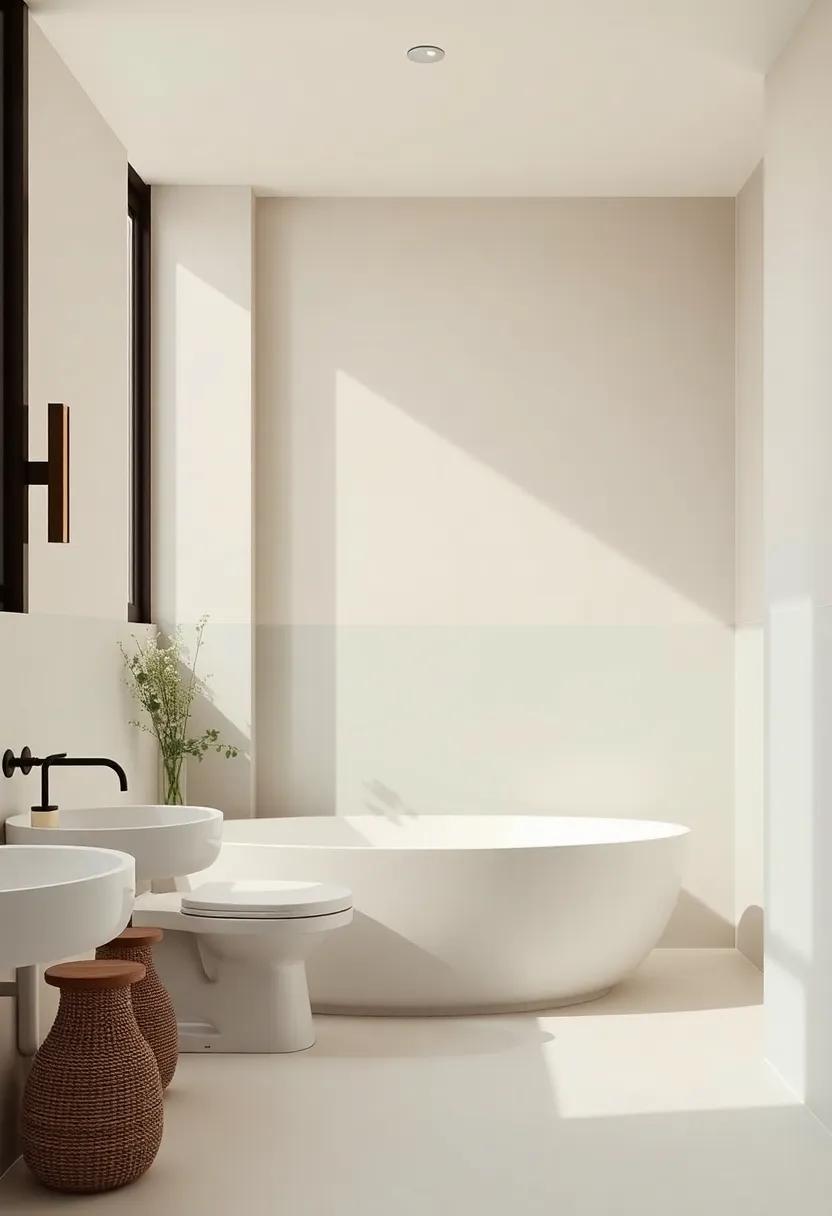
Creating a sanctuary-like ambiance in your bathroom can be beautifully achieved through the use of elegant color palettes. Think soft, muted tones that evoke a sense of peace and tranquility.Shades such as creamy whites, soft grays, and pale blues can work wonders in establishing a serene atmosphere. These colors not only enhance natural light, making the space feel larger and more open, but they also encourage relaxation—perfect for unwinding after a long day. Pair these with rich accents of deep navy or sage green for the cabinets or textiles to add a layer of sophistication without overwhelming the senses.
To achieve a cohesive look, consider incorporating materials that complement your chosen color palette. The following elements can enhance this tranquil setting:
- Natural Wood Accents: Light hardwood flooring or bamboo shelving adds warmth.
- Textured fabrics: Soft cotton or linen towels in matching light hues promote comfort.
- Subtle Metallics: Fixtures in brushed nickel or matte gold can elevate the overall design without being intrusive.
When selecting colors,it’s also effective to brainstorm a palette that blends various shades into one harmonious scheme.Here’s a simple overview of an elegant color scheme:
| Primary Color | Accent Color | Neutral Color |
|---|---|---|
| Soft White | Pale Blue | Light Gray |
| Steely Blue | Deep Navy | Warm beige |
| Off-White | Sage Green | Muted Taupe |
The Allure of Vintage Tiles in Modern Bathroom Design
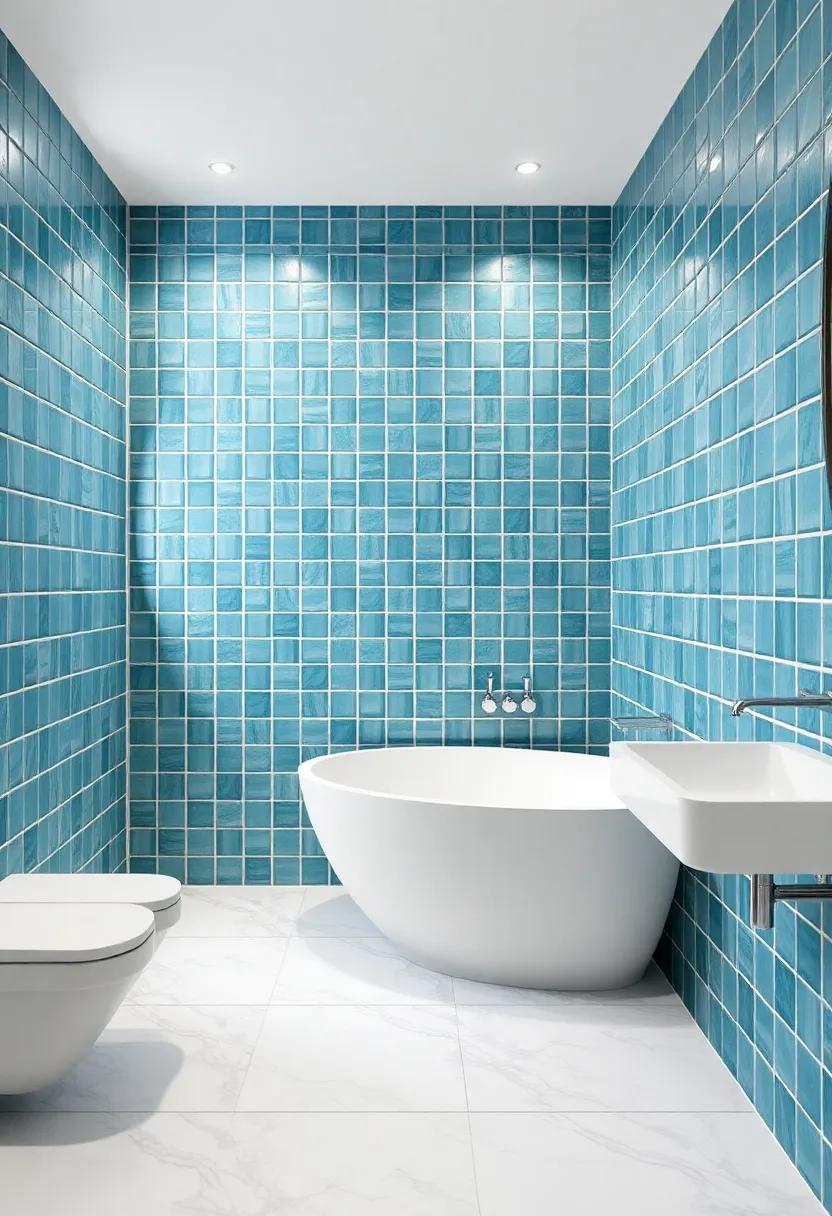
The distinct charm of vintage tiles effortlessly weaves nostalgia into modern bathroom designs, transforming these spaces into timeless retreats.With a plethora of patterns and textures, vintage tiles serve not just as functional elements but as captivating statements. Notably, their unique aesthetics add depth and personality, making them a favored choice among designers and homeowners seeking character amidst contemporary minimalism.When carefully selected,these pieces can harmoniously coexist with sleek fixtures,creating a stunning juxtaposition that feels both lively and serene.
Incorporating vintage tiles into a bathroom can enhance its overall appeal through various design elements. Consider these advantages:
- Unique Patterns: Each tile tells a story, featuring designs that can range from intricate floral motifs to bold geometric shapes.
- Textural Variety: Combine smooth and patterned tiles to generate visual interest and tactile contrast.
- Color Versatility: Vintage tiles often come in a wide spectrum of shades, easily blending with diverse color schemes.
Additionally, the eco-conscious advantages of opting for vintage tiles cannot be overlooked. By repurposing existing materials, homeowners contribute to sustainability while adding character to their space.
Iconic Bathtubs that Exude Luxury and Charm
![]()
When stepping into a bathroom adorned with an exquisite bathtub, one cannot help but feel a wash of serenity and indulgence. Freestanding tubs command attention with their sculptural elegance, frequently enough crafted from luxurious materials such as copper, marble, or high-gloss acrylic. The appeal lies not just in their functionality but in their ability to transform a mundane bathing ritual into a lavish escape. Popular styles include:
- Clawfoot Tubs: Timeless and nostalgic, these tubs serve as a statement piece, often complemented with vintage-inspired fixtures.
- Soaking Tubs: deep and spacious, perfect for immersing oneself in a soothing warm bath, frequently enough with a built-in armrest for the ultimate relaxation.
- Modern Aesthetic Tubs: Sleek lines and minimalist shapes appeal to contemporary tastes, melding form and function beautifully.
Beyond aesthetics, iconic bathtubs also echo stories of craftsmanship and heritage.Many of these luxurious options carry features that enhance both the visual and tactile experience. As a notable example, the tactile contrast of a smooth porcelain surface can be paired with intricate bronze fixtures. Additionally, the footprint of these designs often promotes an open space feel, allowing for an uninterrupted flow in the bathroom. Consider the harmony of different styles while incorporating a stunning tub; a well-chosen centerpiece can elevate the entire room, making it a sanctuary of relaxation. Below is a simple comparison of some popular tub materials:
| Material | Pros | Cons |
|---|---|---|
| Copper | Beautiful patina, excellent heat retention | Requires regular maintenance to prevent tarnishing |
| Cast Iron | Durable, retains heat well | Heavy, can be difficult to install |
| acrylic | Lightweight, available in many styles | Less durable compared to metal options |
Classic Sinks: Blending Functionality with Timeless Grace
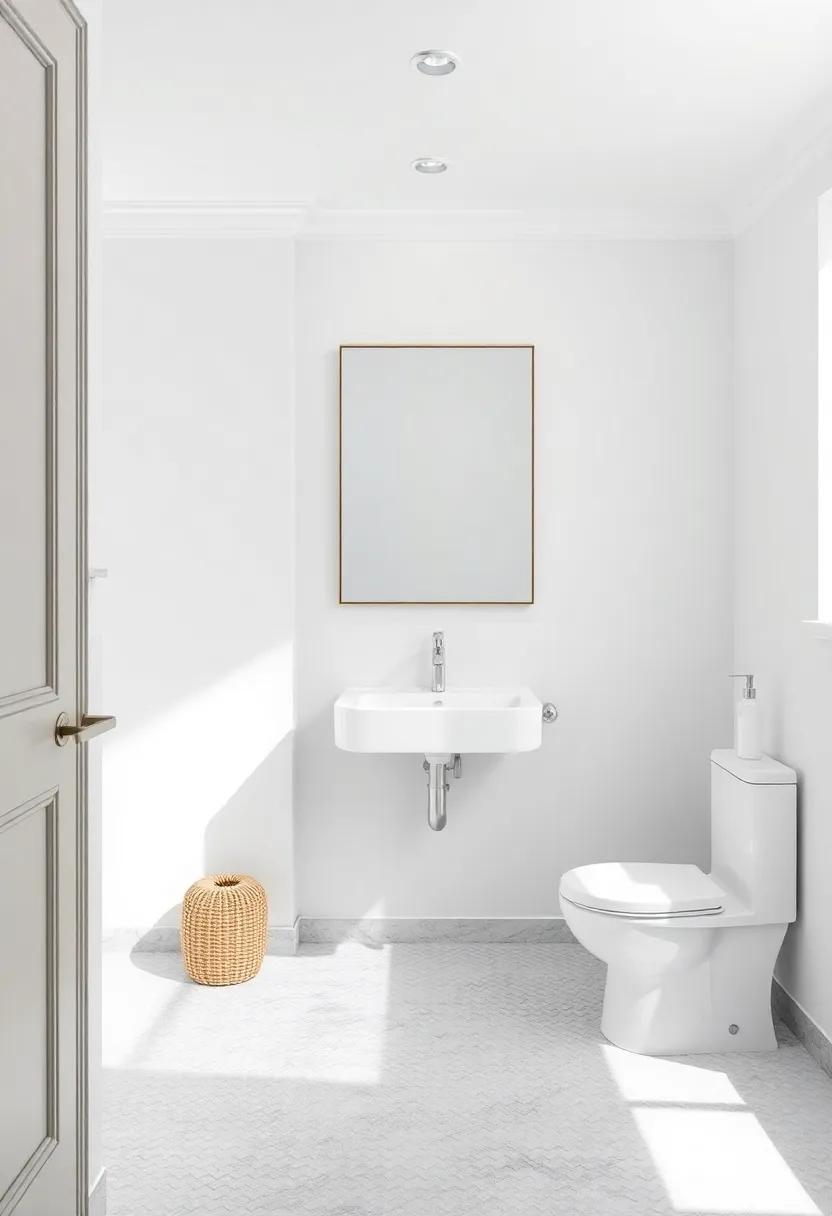
The essence of classic sinks lies in their ability to meld practicality with aesthetic allure. Designed not only for utility, these sinks often feature intricate detailing that transforms a mundane space into a sanctuary of sophistication. materials such as porcelain, cast iron, or natural stone are commonly employed, providing durability while maintaining a vintage allure. Their generous basins and elegant shapes invite a sense of nostalgia, reminiscent of bygone eras, and evoke a timeless charm that resonates with homeowners and interior designers alike.
Classic sinks also offer a variety of styles that can complement any traditional or transitional bathroom. From pedestal models that stand proudly on their own to more ornate drop-in sinks, their versatility is unmatched. Consider the following popular options:
- Farmhouse Sinks: Ideal for a rustic touch, these sinks boast ample space and a deep basin.
- Wall-mounted Sinks: Perfect for saving space, they bring a minimalist elegance to the bathroom.
- Double Basins: Functional and stylish, these sinks are designed for sharing without sacrificing style.
Each option marries form and function seamlessly, making classic sinks a staple in enduring bathroom designs. Moreover, they can be paired with vintage-inspired fixtures to further enhance their appeal. The result is a harmonious blend of practicality and aesthetic that elevates any bathroom setting.
the Role of Lighting in Enhancing Classic Bathroom elegance

In the realm of classic bathroom design, lighting serves not merely as a functional element but as a transformative force that breathes life into elegantly curated spaces. Soft, ambient lighting can illuminate intricate details such as vintage fixtures, ornate molding, and the graceful curves of a clawfoot tub. By strategically placing fixtures that emit warm, inviting light, homeowners can create an atmosphere that beckons relaxation and indulgence. Consider incorporating elements like:
- chandeliers: A statement piece that draws the eye, creating a focal point in the room.
- Sconce Lighting: Wall-mounted fixtures that add both character and a soft glow alongside mirrors.
- Recessed Lighting: Offering subtle brightness to enhance architectural features without overwhelming the senses.
Moreover, the interplay of light and shadows can elevate the elegance of a bathroom by highlighting textures and finishes. As an example, the glossy sheen of marble countertops or the delicate patterns of vintage tile can be accentuated with careful lighting placement. to achieve the perfect balance, consider using a layered lighting approach that combines different sources, ensuring versatility for various activities, from relaxing baths to morning routines.A simple table demonstrating lighting styles and their effects may be helpful:
| Lighting Type | Effect |
|---|---|
| Ambient Lighting | Overall illumination, creating a welcoming environment. |
| Task Lighting | Focused light for grooming and detailed tasks. |
| Accent Lighting | Highlighting decor elements and architectural features. |
Elegant Accessories: Small Details that Make a Big impact

When it comes to classic bathroom design,the right accessories can transform a simple space into a sanctuary of elegance. Finishing touches such as ornate towel holders, elegant soap dispensers, and vintage-inspired mirrors add layers of sophistication, helping to create a cohesive aesthetic. A few carefully selected pieces can elevate the overall appeal without overwhelming the space. Incorporating elements like brass fixtures or ceramic vases adorned with fresh flowers subtly contributes to a refined ambiance. These small details are essential in tying together the various elements of bathroom decor, ensuring everything feels intentional and harmonious.
In this quest for sophistication, consider integrating accessories that showcase craftsmanship and attention to detail. Think about using a curated selection of items, such as:
- Monogrammed towels for a personalized touch
- Handcrafted soap dishes that bring artisanal flair
- luxurious bath mats to soften the space
- Classic candleholders that provide ambiance
By choosing these carefully, your bathroom will not only reflect timeless elegance but also highlight your personal style. Remember, it’s frequently enough the unexpected details that appeal to the senses and linger in memories, making every visit an experience to cherish.
Charming vanities: The Heart of a Classic Bathroom

The allure of classic bathroom design often hinges on the presence of charming vanities, serving as focal points that marry form and function. These vanities are more than mere storage; they evoke an atmosphere of grace and elegance. With intricate detailing and rich finishes, classic vanities tell a story that transcends time, inviting one to indulge in a tranquil retreat.Elements that make these vanities captivating include:
- timeless Materials: Solid wood and marble offer durability with a luxurious touch.
- Intricate Hardware: Vintage-inspired fixtures bring authenticity and character.
- Soft Color Palettes: Creams and soft pastels create a soothing ambiance.
Functionality does not take a backseat in these stunning designs. Thoughtful layouts showcase a balance between aesthetic beauty and everyday utility, allowing for seamless organization of toiletries and linens.The vanities can be tailored to individual spaces, accommodating various styles from elegant pedestal sinks to expansive countertops that enhance both storage and comfort. Below is a glimpse into the essential features that define a classic vanity:
| Feature | Description |
|---|---|
| Double Sink Options | Ideal for shared spaces, promoting convenience and style. |
| Cutouts for Plumbing | Designed for easy installation while maintaining aesthetic appeal. |
| Open Shelving | Provides quick access to essentials while adding visual interest. |
Combining Modern Technology with Vintage Designs
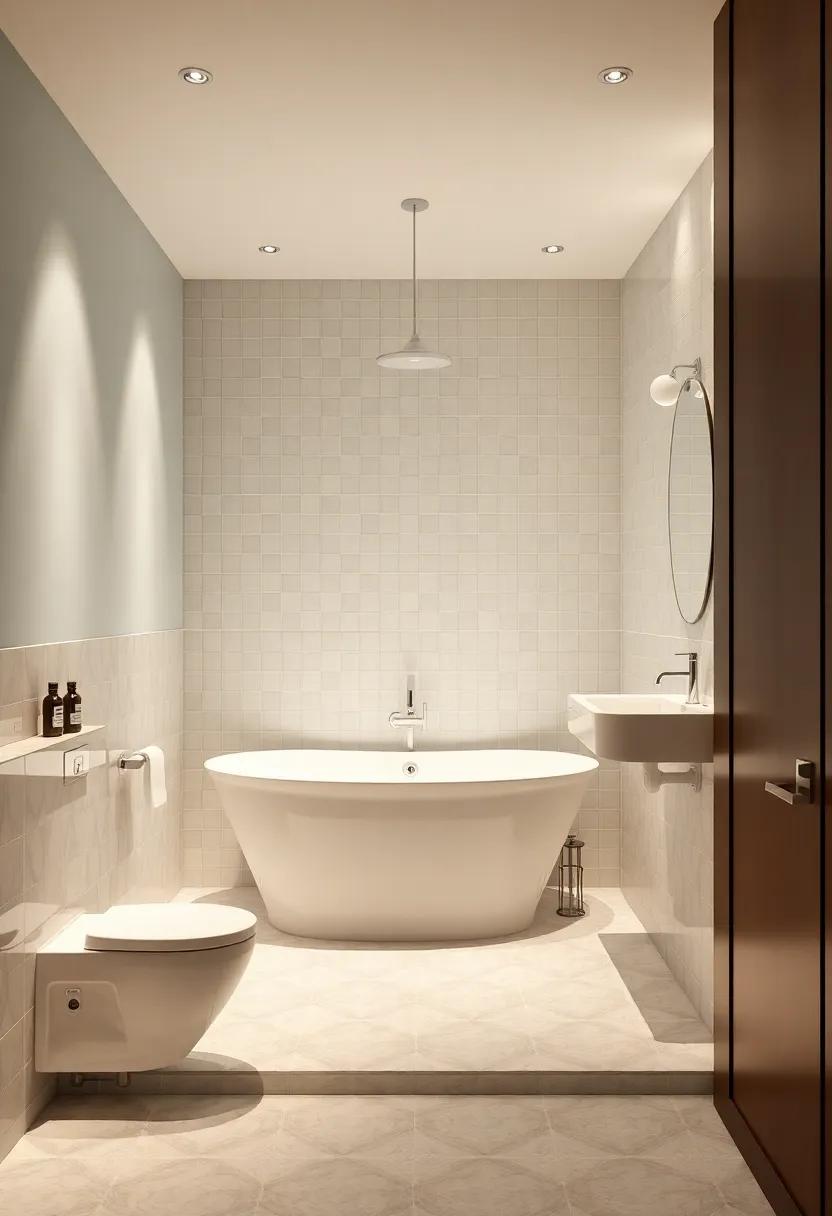
Innovative bathroom design today has embraced the charm of yesteryears by integrating vintage aesthetics with cutting-edge technology. This fusion creates spaces that resonate with nostalgia while delivering modern-day functionality. Imagine a clawfoot tub paired with a thermostatic shower system,allowing you to enjoy the elegance of traditional form alongside the convenience of contemporary plumbing advancements. Graphic tiles reminiscent of classic patterns can be complemented by smart lighting solutions, which easily adjust your bathroom’s ambiance with just a voice command or a tap on your smartphone.
Moreover, lasting materials are now at the forefront of this design evolution, merging the timeless appeal of vintage craftsmanship with eco-conscious innovation. Features such as water-efficient faucets and toilets, combined with reclaimed wood cabinetry, exemplify this ethical approach to beauty. To visualize this transformative blend, consider the following table showcasing examples of vintage-inspired technology that enhance both style and functionality:
| Vintage Element | Modern Upgrade |
|---|---|
| Pedestal Sink | Smart Mirror with Lighting |
| Showerhead with Classic Design | Water-Saving Technology |
| Antique Fixtures | Touchless Controls |
The Significance of Textiles in Creating a Cozy, Classic Space
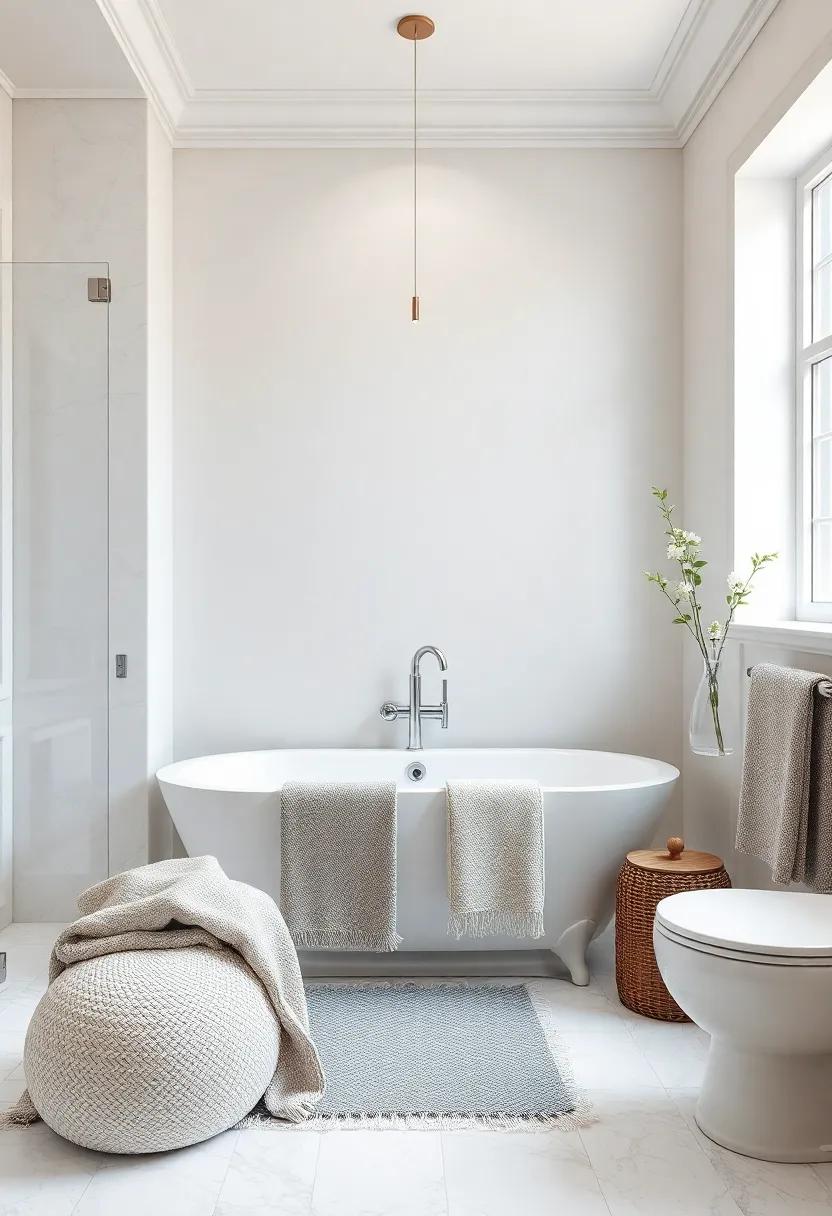
Textiles play a pivotal role in transforming a space from merely functional to truly inviting, and in a classic bathroom, this change is particularly pronounced. Luxurious fabrics, such as soft cottons, muted linens, and rich velvets, add layers of texture and warmth, creating an atmosphere that feels both refined and comfortable.When selecting textiles, consider the following elements that contribute to that signature cozy feel:
- Rugs: plush area rugs or vintage-inspired runners can soften the usually cold feel of tiled floors.
- Towels: High-quality,fluffy towels in muted colors bring a spa-like experience,encouraging relaxation.
- Curtains: Light, airy drapes or heavy velvet panels can control light and privacy while enhancing the aesthetic softness.
- Accessories: Incorporate decorative pillows and plush throws for an extra layer of comfort, even in a bathroom setting.
Choosing the right textiles is essential for establishing a sense of cohesion and timelessness. Textiles not only serve practical purposes, they also act as a design language that ties various elements of a space together. consider a harmonious color palette that reflects the classic charm, leaning towards earth tones or soft pastels. In conjunction, a table highlighting textural elements can further guide your selections:
| Textile Type | Material | effect |
|---|---|---|
| Bath Mat | Cotton | Absorbent and soft underfoot |
| shower Curtain | Canvas | Blocks water while enhancing style |
| towels | Bamboo Fiber | Eco-pleasant with a luxurious feel |
| Curtains | Linen Blend | Light filtering and elegant drape |
Symmetry and Proportion: Key Principles of Timeless Design
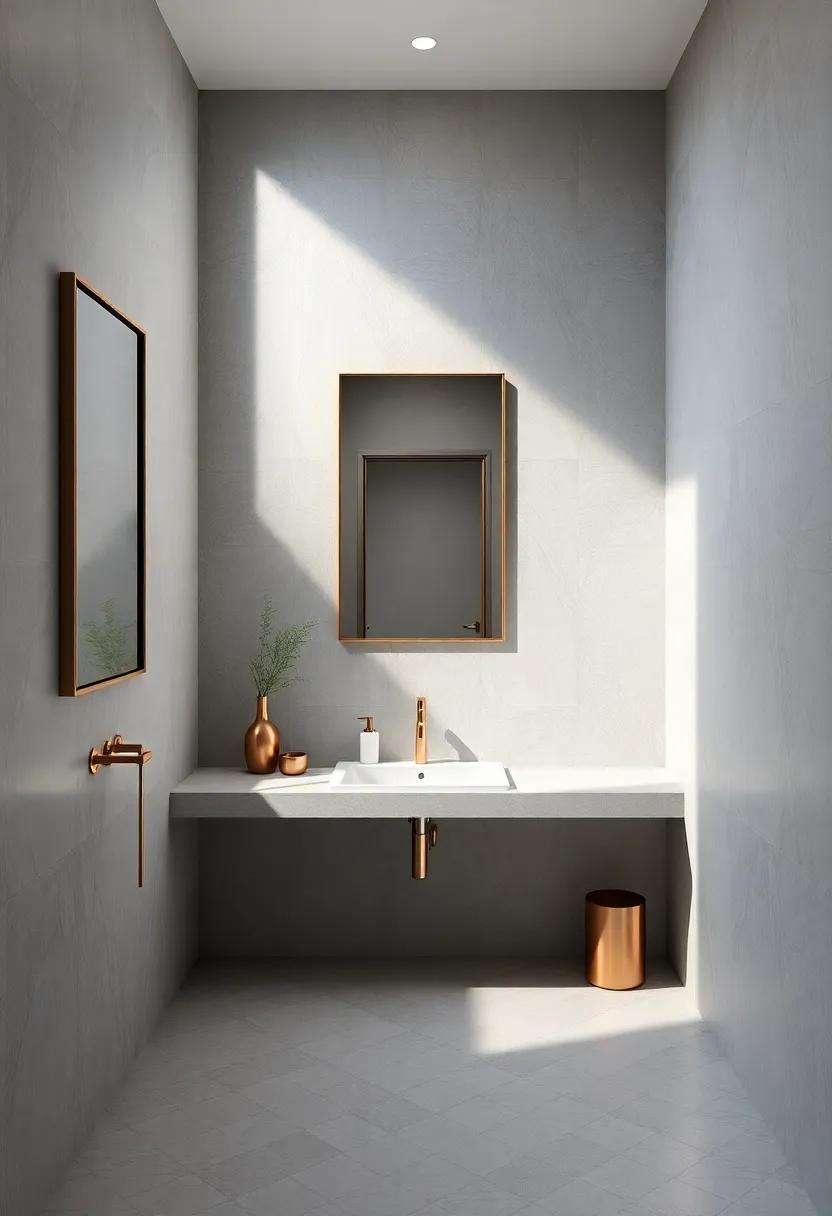
At the heart of classic bathroom design lies the interplay of symmetry and proportion, which together create a harmonious environment that is both functional and aesthetically pleasing.Symmetry provides a sense of balance and stability, drawing the eye across the space in a way that feels instinctively comfortable. When elements are arranged symmetrically—like matching vanities or evenly spaced fixtures—it fosters a visual rhythm that is soothing and inviting. This principle is not just about aesthetics; it subtly influences how individuals perceive and interact with the space, making it feel organized and deliberate.
Proportion, on the other hand, focuses on the relationship between different elements within the bathroom. An exquisite design ensures that every piece is scaled appropriately, whether it’s a lavish soaking tub or a delicate light fixture. Key considerations include:
- Scale: Ensure fixtures harmonize with the overall dimensions of the room.
- Contrast: use varying sizes to add interest, but keep them proportionate.
- Space: Allow for adequate spacing to prevent overcrowding and enhance accessibility.
When both symmetry and proportion are cornerstones of the design, the result is not just a bathroom, but a personal sanctuary that remains timeless and elegant, reflecting a profound understanding of beauty and function.
Natural Elements: Bringing the Outdoors In
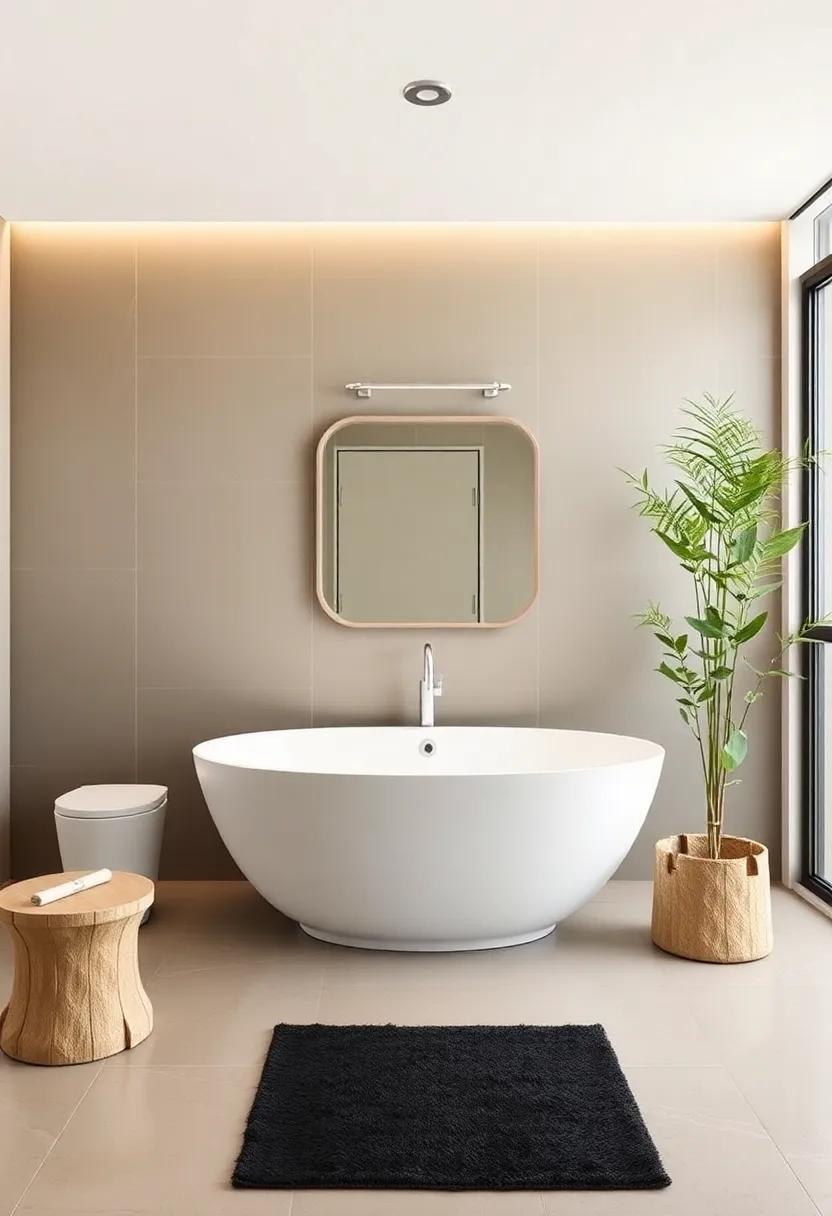
Incorporating natural elements into bathroom design fosters a serene atmosphere that echoes the tranquility of the outdoors. Think of organic materials, such as wood accents or stone accents, which can harmonize with traditional fixtures and create an inviting space. Consider the following elements:
- Natural Stone Tile: Opt for marble or slate to bring rugged elegance underfoot.
- Wood Accents: Use reclaimed wood for cabinetry or shelving to introduce warmth.
- Indoor Plants: Add greenery with easy-to-care-for plants like ferns or succulents to enhance air quality and aesthetics.
Natural light is equally vital for achieving a peaceful sanctuary. Large windows or strategically placed skylights can flood the space with sunlight, creating a radiant, airy feel throughout the day. To illustrate how light and natural materials work in harmony, consider the table below that highlights the benefits of key design elements:
| Element | Benefits |
|---|---|
| Natural stone | Timeless appeal, durability, unique patterns |
| Wood Features | Warmth, texture, eco-friendly options |
| natural Light | Enhances mood, reduces energy costs, highlights design elements |
Illuminating History: The Role of Antique Mirrors
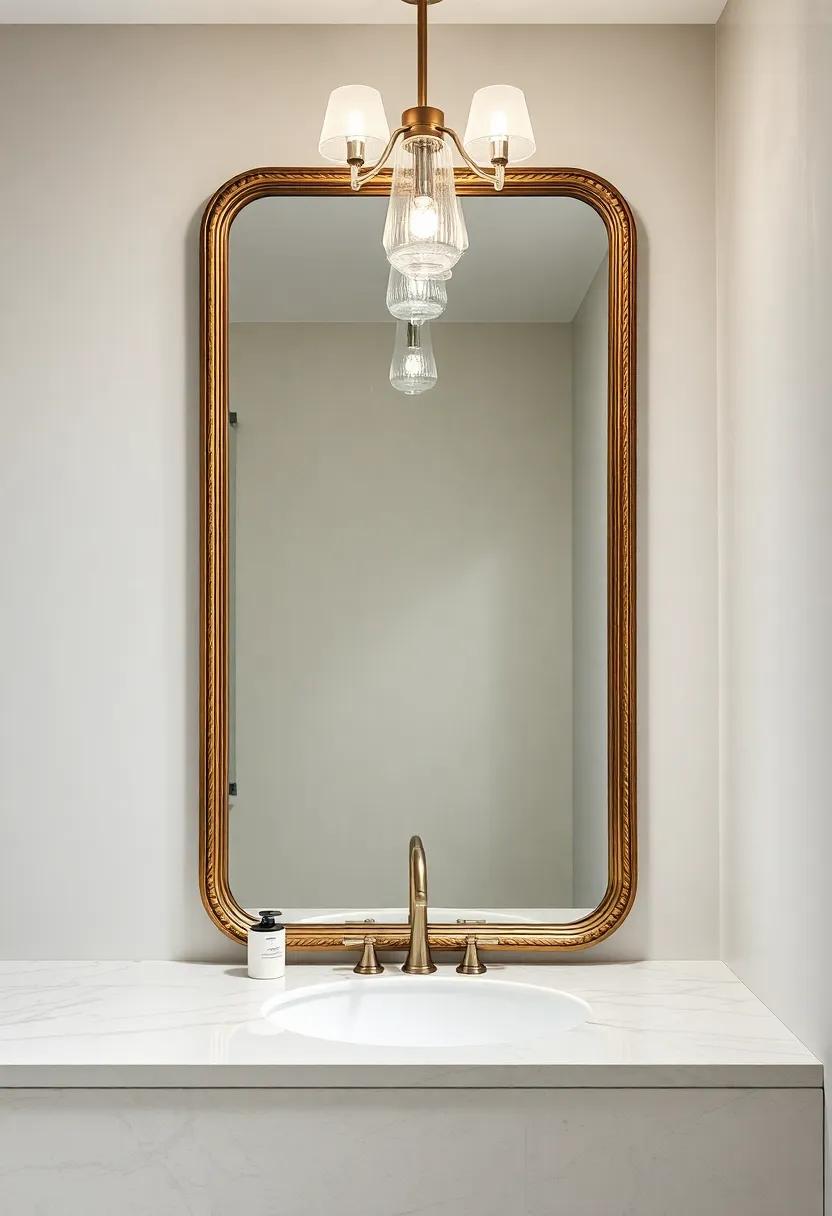
the charm of antique mirrors goes beyond mere reflection; they serve as portals to the past, each one telling a story steeped in history and artistry. From the elegantly crafted frames to the unique glass imperfections, these mirrors bring a touch of nostalgia into classic bathroom designs. The intertwining of function and artistry in these pieces transforms any ordinary space into a timeless retreat. Whether it’s a baroque gilded frame or a sleek Victorian design, antique mirrors infuse a sense of grandeur while reflecting contemporary creativity.
Incorporating these mirrors into bathroom decor can be both a practical and an aesthetic choice. Their historical significance allows homeowners to make bold design statements,enhancing the overall ambiance. Consider the following benefits of including antique mirrors in your bathroom:
- Visual Depth: Larger mirrors can create an illusion of space, making smaller bathrooms feel larger.
- Unique Style: Each piece is one-of-a-kind, offering a distinct character that modern reproductions often lack.
- Heritage Connection: Antique mirrors connect us to the craftsmanship of past eras, invoking a sense of thankfulness for history.
Creating Focal Points with Art and Decor in a Classic Bathroom
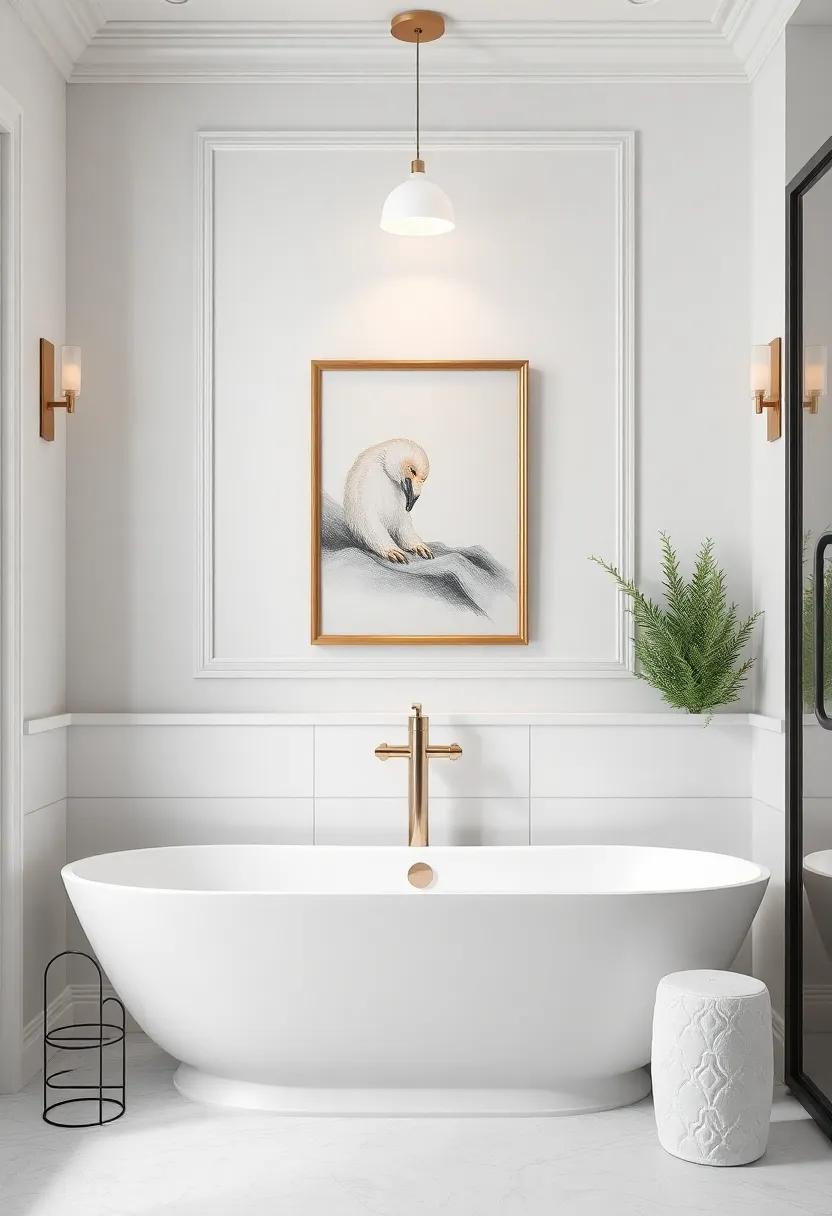
In a classic bathroom, creating focal points with art and decor serves to enhance the overall ambiance, infusing the space with character and charm. Consider incorporating elegant wall art, such as classic paintings or vintage photographs, that resonate with the timeless theme of the design. These pieces can be mounted above a beautiful freestanding tub or placed strategically near an ornate mirror to reflect light and details,making them truly stand out. Additionally, the following elements can serve as captivating focal points:
- Luxurious chandeliers to add sophistication and warmth.
- Antique vases filled with fresh flowers on countertops for a touch of color.
- Handcrafted tiles in eye-catching patterns as a backdrop for the vanity area.
- Vintage furniture pieces, like a classic stool or a chic side table, to offer both style and function.
Another effective way to create focal points is through the use of textures and materials that draw the eye. As a notable example, deep wood tones in cabinetry and shelving can be complemented by soft, plush textiles such as embroidered towels or lavish rugs that invite comfort and style. To illustrate the harmonious blend of these elements, consider the following comparisons:
| Material | Effect |
|---|---|
| Bright Porcelain | Illuminates the space, enhancing light and openness. |
| Rich Marble | Introduces luxury and timeless elegance. |
| Soft Fabrics | Adds warmth and comfort to a polished look. |
The Influence of Architectural Details on Timeless Bathroom Style

The elegance of a bathroom often resides in the subtle intricacies of its architectural details. Elements such as crown molding, wainscoting, and carefully selected fixtures contribute significantly to the overall impression of sophistication. Each detail serves not just as a functional component but also as a visual cue that enhances the space’s aesthetic. Incorporating classic materials like marble and brass further amplifies this appeal, offering durability and timelessness that withstand the test of trends.
In addition to material selection, the layout of a bathroom can dramatically dictate its style. thoughtfully designed spaces highlight symmetry, allowing for a harmonious flow that echoes throughout the room. Consider the following features that play a pivotal role in establishing a classic atmosphere:
- Freestanding bathtubs: create a central focal point that speaks of luxury.
- Step-in shower designs: Offer a seamless blend with traditional elements.
- Vintage-inspired faucets: Infuse character and authenticity into the design.
Moreover, the color palette selected can greatly influence the room’s overall ambiance.A carefully crafted combination of soft neutrals and rich tones can evoke a sense of comfort while maintaining clarity. It’s essential to strike a balance:
| Color | Effect |
|---|---|
| White | Creates an airy and timeless feel |
| Soft gray | Provides warmth without overwhelming |
| Deep navy | Introduces a bold, luxurious tone |
The Essential Role of Color in Achieving Cohesion and Warmth
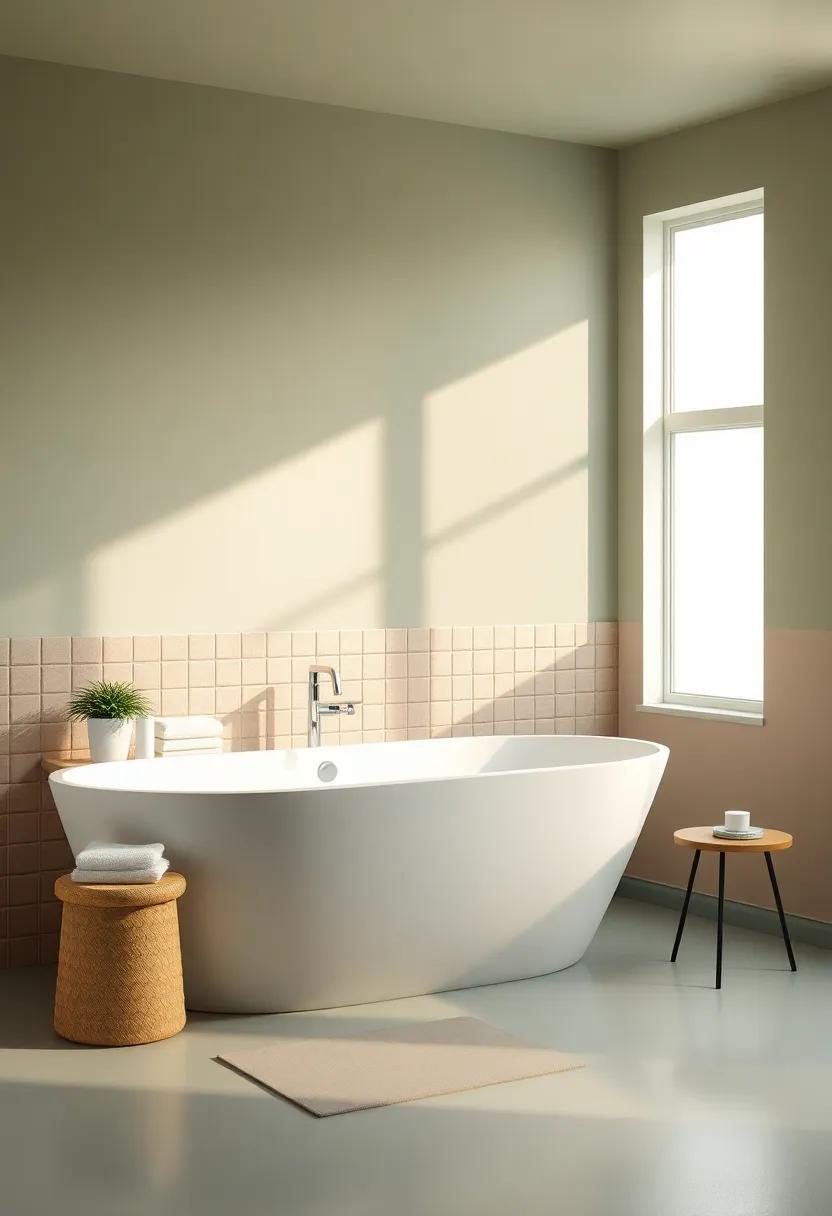
Color is not merely an aesthetic choice; it serves as a pivotal element in establishing a cohesive and inviting ambiance within a classic bathroom. The right color palette can transform a space, creating an atmosphere that resonates with comfort and sophistication. Soft, muted shades like pastels and earthy tones work harmoniously to create a serene backdrop, while rich hues like deep navy or forest green can introduce depth and drama, enhancing the overall elegance of the design. by carefully selecting complementary colors, designers can weave together various elements—fixtures, tiles, and furnishings—into a unified appearance that feels intentional and nurturing.
The interplay of color with light is another essential aspect that adds warmth to the space. Natural light can soften and warm colors throughout the day, while strategically placed fixtures can highlight certain shades, creating striking contrasts and inviting reflections. To achieve a desirable effect, consider incorporating the following tips:
- Layering Colors: Combine lighter and darker shades to add dimension.
- Accent Colors: Use bold accent colors to draw attention to specific features.
- Consistency: Maintain a consistent color scheme across fixtures and accessories.
Choosing the right color combinations can evoke emotions and set a tone that aligns with the timeless elegance intended in classic bathroom designs. With careful consideration of color in both walls and decor, a bathroom can not only fulfill its functional purpose but also become a sanctuary of style and warmth.
Exploring iconic Design Movements in Bathroom History
![]()
Throughout the ages, bathrooms have undergone transformations in functionality and aesthetics, frequently enough reflecting the prevailing design movements of their time.The Art Deco period, for instance, celebrated geometric shapes and luxurious materials, resulting in spaces that exuded glamour. Bold colors and ornate fixtures characterized the bathrooms of the 1920s and 1930s,where every element,from the sink to the tiling,was designed to enchant. In contrast,the Mid-Century Modern movement of the 1950s embraced simplicity and functionality. Clean lines,minimalist fixtures,and the clever use of glass transformed bathrooms into serene retreats,celebrating both form and function in equal measure.
The late 20th century saw the rise of Postmodernism, which challenged traditional notions of design by embracing eclecticism and playful elements.This period saw the introduction of vibrant colors, unexpected tiling patterns, and a mix of both vintage and contemporary fixtures, resulting in personalized spaces that reflect individual style. As we journey through these iconic movements, we see how each era not only influenced the aesthetics of bathroom design but also shaped their overall purpose as spaces of relaxation and rejuvenation. Today, classic bathroom designs continue to inspire, drawing upon these rich histories while integrating modern technologies and sustainable materials for contemporary appeal.
Balancing Minimalism with Classic Elegance in Contemporary Spaces
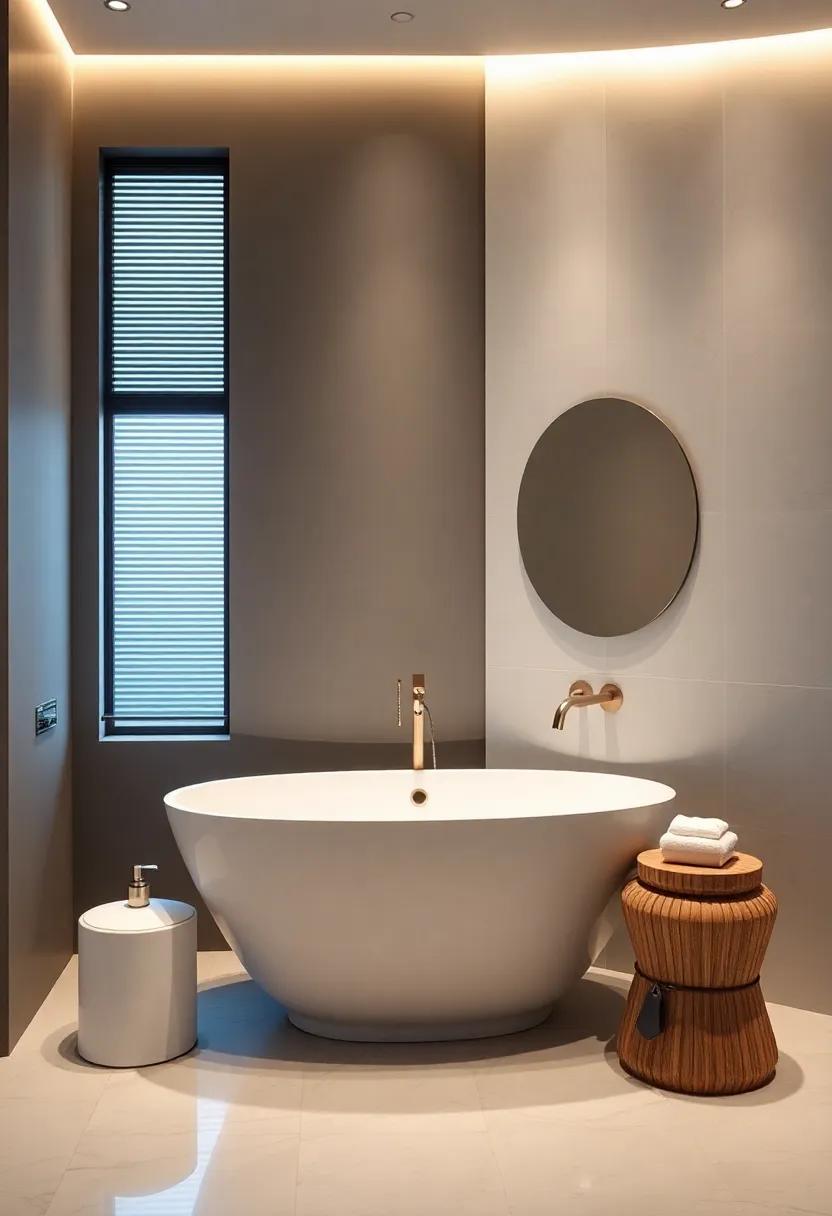
To create a harmonious blend of simplicity and sophistication, incorporating elements of both minimalism and classic design is essential. Start by choosing a neutral color palette that serves as a serene backdrop for your bathroom.This can include shades such as whites, creams, and soft grays to enhance the feeling of space and light. Than, introduce classic fixtures with intricate details like vintage faucets and designer sconces, which add a touch of ornate elegance without overwhelming the senses. Sustainable materials like marble or natural stone can further bridge the gap between these two design philosophies, offering both lasting appeal and modern environmental consciousness.
Balancing these styles can be achieved through thoughtful curation of decor and furniture. Consider these key elements:
- Subtle Patterns: Incorporate delicate tile or wallpaper patterns that nod to traditional designs while keeping the overall look minimal.
- Streamlined Furniture: select vanities and storage that feature clean lines but are crafted with classic finishes like wood or antique metals.
- Statement Pieces: Choose a standout classic piece, such as a freestanding tub or an elegant mirror, that draws the eye without cluttering the space.
| Element | Minimalist Approach | Classic Touch |
|---|---|---|
| Color Palette | Soft neutrals | Warm accent colors |
| Fixtures | sleek designs | Ornate craftsmanship |
| Storage | Concealed spaces | Decorative elements |
A Journey Through Time: Influences of Historical Eras on Modern Design
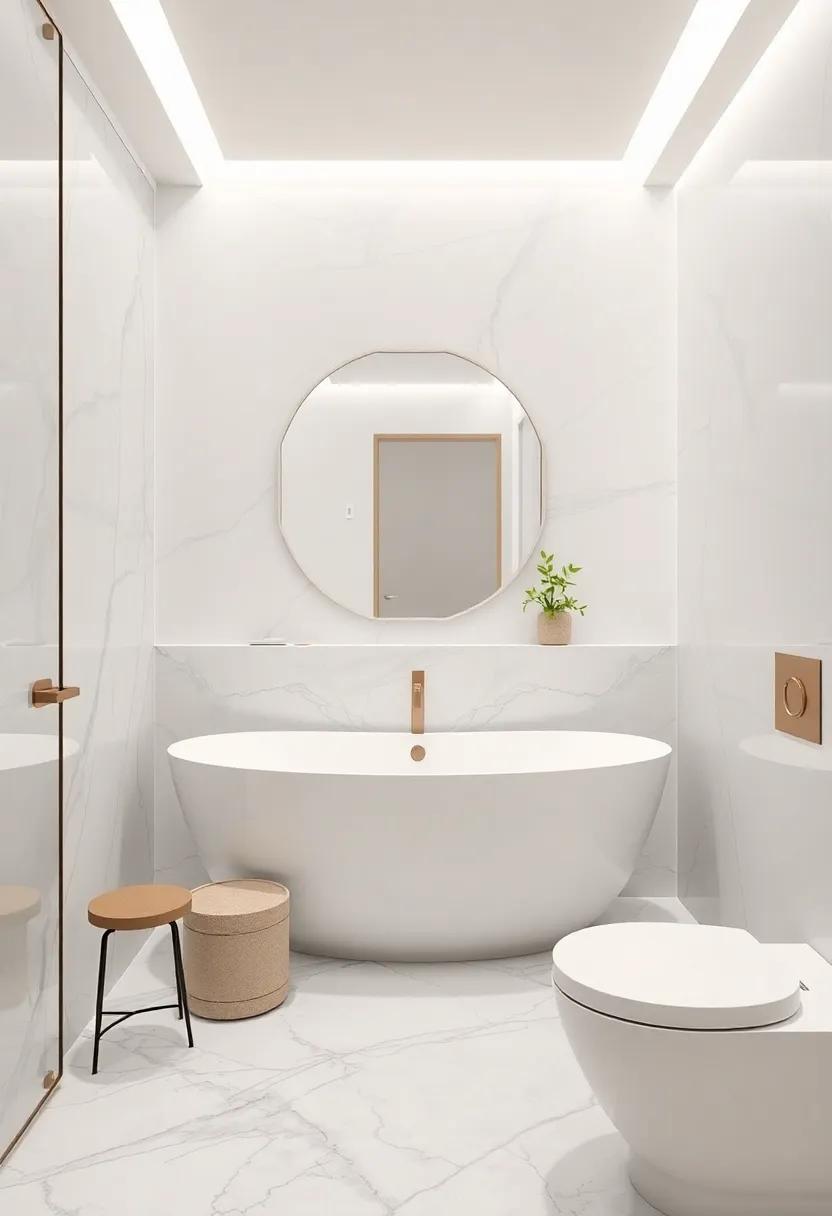
The elegance of classic bathroom design is not merely a trend; it is a beautiful amalgamation of historical influences that echo through the ages.Many elements of today’s bathrooms can be traced back to ancient civilizations that prioritized both functionality and aesthetic appeal.As a notable example, the intricate mosaics of ancient Roman baths serve as inspiration for modern tiles, while the freestanding tubs and pedestal sinks of the Victorian era have found their way into contemporary homes.These fixtures embody a timeless charm,characterized by their graceful lines and ornate details,frequently enough reflecting the distinctive artistry of their respective periods.
Architectural styles throughout history have influenced the way we conceive bathroom spaces today.The Art Deco movement, with its geometric patterns and luxurious finishes, can be seen in many modern designs that seek to create a statement. Similarly, the minimalist elegance of the Bauhaus school emphasizes functionality without sacrificing beauty, leading to sleek, modern installations that maintain a classic feel. Below is a brief overview of notable historical influences and their modern counterparts:
| Historical Era | Influential Features | Modern Applications |
|---|---|---|
| victorian | Freestanding bathtubs,intricate woodwork | Modern clawfoot tubs,detailed cabinetry |
| Art Deco | Bold geometric shapes,luxury materials | Stylish lighting fixtures,mosaic tiles |
| Bauhaus | Functional minimalism,clean lines | Sleek vanities,understated décor |
In Summary
In a world where trends come and go with the swift swipe of a finger,classic bathroom design stands as a testament to the beauty of enduring elegance. As we’ve explored throughout this article, the appeal of timeless aesthetics lies not only in their aesthetic harmony but also in their ability to evoke a sense of comfort and nostalgia. Whether it’s the subtle grace of clawfoot tubs or the sophistication of marble countertops, these elements create spaces that transcend fleeting fashion.
As you consider your own bathroom renovations or simply appreciate the art of design, remember that the essence of timeless elegance is found in simplicity, quality materials, and a thoughtful attention to detail. Embracing classic design is not just about adhering to tradition; it is an invitation to create a sanctuary that celebrates both the past and the present.
So, may your next design endeavor be inspired by the whispers of history, guiding you to craft a space that stands the test of time, where elegance remains forever in style.
As an Amazon Associate I earn from qualifying purchases.
